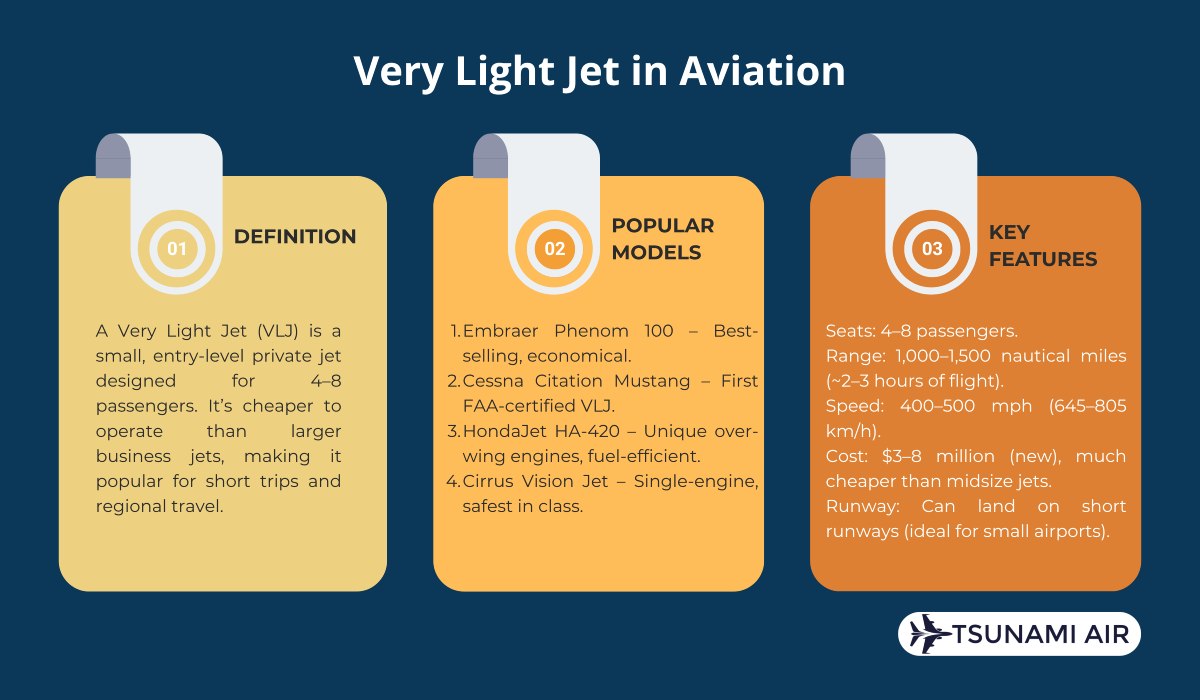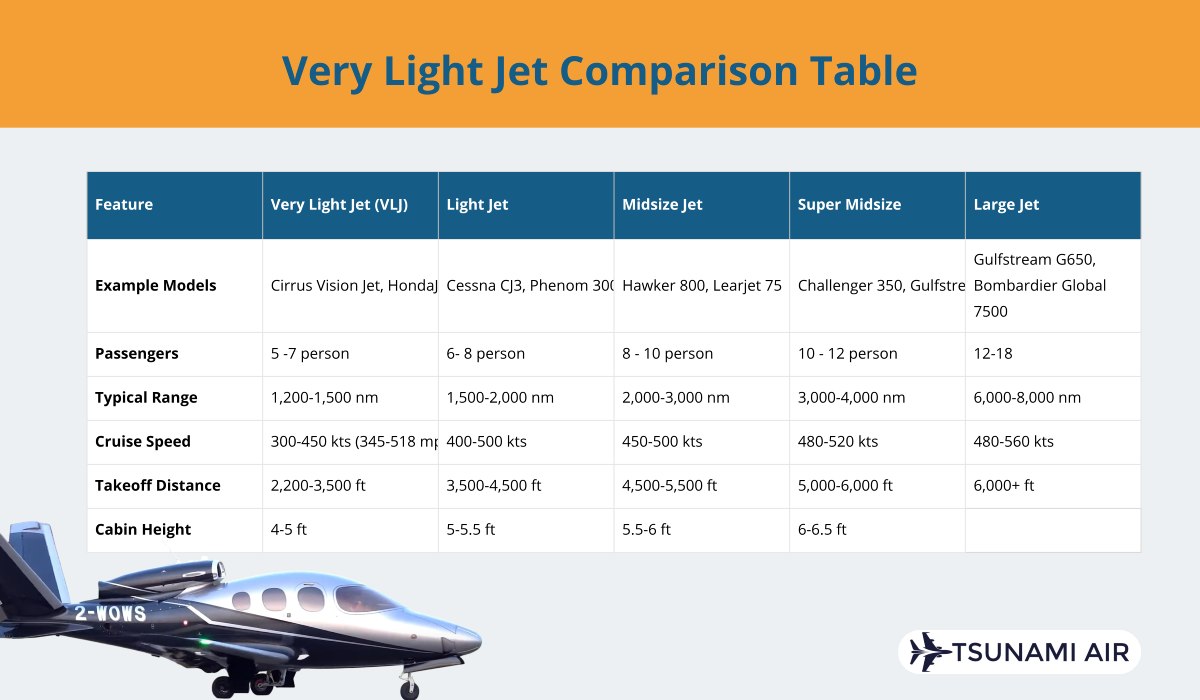Very Light Jet: Definition, Comparison
Jim Goodrich • • Reading time: 3 min

A very light jet is a small-class business aircraft designed for efficiency and accessibility in private aviation. The category defines the segment of entry-level jets with compact size and operational simplicity. Very light jets compare favorably to larger private jets in terms of cost, operational flexibility, and pilot requirements. The cabin offers sufficient space for short-range flights while maintaining comfort. Performance ensures efficient cruising speeds suitable for regional travel. Range supports trips across moderate distances without frequent refueling stops. Operations emphasize ease of use and lower maintenance demands. Compare the very light jet's characteristics, including its flight capabilities, size, and technical specifications.
The Cessna Citation Mustang provides a range of 1,200 nautical miles (2,222 kilometers) and a cruise speed of 340 mph (547 km/h) with an operational cost of $1,600 per flight hour. The HondaJet HA-420 excels with a range of 1,357 nautical miles (2,513 kilometers) and a cruise speed of 422 mph (679 kilometers per hour). The Embraer Phenom 100 delivers a maximum cruise speed of 453 mph (729 km/h) and a range of 1,178 nautical miles (2,182 kilometers) while increasing cabin space by 30%. The Cirrus Vision Jet ensures a range of 1,275 nautical miles (2,361 kilometers) and a cruise speed of 345 mph (555 kilometers per hour), combining advanced technology with safety features. Range, speed, and operating costs influence suitability for specific needs.
What does VLJ stand for?
VLJ stands for Very Light Jet, a term frequently used in the aviation market to define a category of small business jets known for efficiency and cost-effectiveness. Very Light Jets accommodate four to eight people, making them ideal for personal use or point-to-point air taxi services. These jets operate from runways as short as 3,000 feet (910 meters), boosting their versatility in various regions in the USA. Industry experts, including forecaster Brian Foley, highlight VLJs as a transformative step forward in achieving lower operating costs while maintaining high performance standards. The term Very Light Jet, previously known as microjets or miniature private jets, has garnered attention in the aviation society.

What are the best very light jets?
The best very light jets are presented in the table below.
Model | Range (nm) | Cruise Speed (mph) | Operating Cost | Cabin Capacity | Key Features |
Eclipse 500 | 1,125 | 390 | $1,000/hour | Up to 4 passengers | Lightweight design, affordability |
Cessna Citation Mustang | 1,200 | 340 | $1,600/hour | Up to 4 passengers | Garmin G3000 avionics, balance |
HondaJet HA-420 | 1,357 | 422 | Not specified | Not specified | Over-the-wing engine, fuel eff. |
Embraer Phenom 100 | 1,178 | 453 | Not specified | Up to 4 passengers | Prodigy Touch, luxury cabin |
Cirrus Vision Jet | 1,275 | 345 | $950/hour | Not specified | Whole-aircraft parachute, safety |

The best very light jets depend on specific needs like range, speed, operational cost, and pilot requirements. The Phenom 100 emphasizes performance and cabin amenities rather than fuel efficiency. This design increases cabin space by 30% and reduces drag, contributing to a 40% improvement in fuel efficiency over similar light jets. Range, speed, and operating costs vary across models, influencing suitability for specific needs. The Cessna Citation Mustang balances range, speed, and cost for versatility. The HondaJet HA-420 excels in innovative design and fuel efficiency, while the Embraer Phenom 100 focuses on performance and cabin comfort. The Cirrus Vision Jet combines advanced technology with safety features, catering to pilots requiring operational ease.